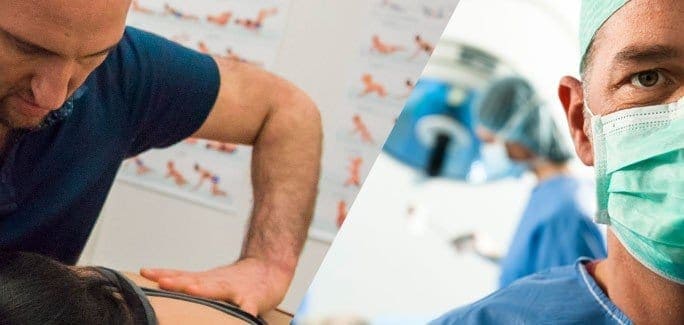One of the most wondrous things about the human body is its amazing ability to heal itself. Yet when many people experience severe low back pain caused by a herniated disc, they assume that nothing short of surgery can correct it. However, research has shown time and time again that at two and five years after diagnosis, there is little difference between patients who had surgery to correct lumbar disc herniation (LDH) and those who had conservative treatment.
Since surgery is expensive and carries many inherent risks, it seems logical to explore non-surgical alternatives to treat herniated disc pain. In fact, there is evidence that patients who receive conservative, non-surgical treatment often resolve their back pain within a matter of weeks. We now know that in response to conservative treatment, herniated discs are frequently resorbed spontaneously, although little is know about the exact mechanisms by which resorption takes place.
In a 2017 literature review, Zhong et al. set out to explore the incidence of spontaneous lumbar disc resorption after conservative treatment of LDH, as reflected by MRI and CT scans. The research team reviewed results from 11 cohort studies, and found that the overall average incidence of spontaneous resorption after LDH was 66.66%, and in the UK alone it was as high as 82.94%. Those statistic holds promise for the large numbers of LDH sufferers who want effective relief without the risk and expense of surgery.
When coming to grips with LDH, it is important to understand its underlying causes, particularly because there is a relatively high rate of recurrence. While many practitioners will treat the symptoms of LDH, they often neglect to follow through with rehabilitative measures to prevent a relapse. Yet the cause of disc herniation is often behavioral or postural in nature, and can therefore be eliminated with proper intervention.
Some common causes of LDH include:
- Age: LDH is most prevalent in people aged 35-50
- Gender: Men are more likely to have LDH that women
- Occupation: Certain types of manual labor put you at higher risk for LDH, as does driving and jobs that require long hours of sitting
- Obesity: Excess body weight can add extra load to the lumbar spine
- Sedentary lifestyle: Being out of shape can increase your overall risk of injury, especially to the spine
- Smoking: Cigarette smoking interferes with blood flow to spinal discs, which speeds up disc degeneration and slows healing
- Genetics: Some people have a family history of LDH
There are a variety of conservative treatment methods for addressing herniated disc pain. Some common treatment strategies include:
- Physical therapy
- Exercise and gentle stretching to help relieve pressure on the nerve root
- Ice and heat therapy for pain relief
- Manual therapies like spinal manipulation
- NSAIDs such as ibuprofen or naproxen
- Education and retraining for lifting techniques
- Postural retraining
The back pain specialists at NYDNRehab are dedicated to not only relieving your pain, but to identifying and correcting the underlying causes. Some treatment methods used at NYDNRehab include DNS (dynamic neuromuscular stabilization), ISM (integrated system model approach), clinical Pilates, postural retraining, myofascial release, acupuncture and other approaches, based on the individual needs of the patient. If you are suffering from low back pain, contact NYDNRehab today, and get the treatment you need to get back to the activities you love.























































